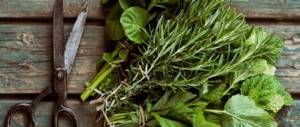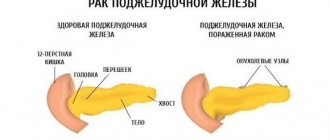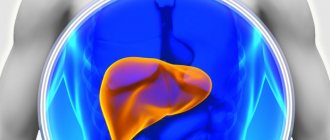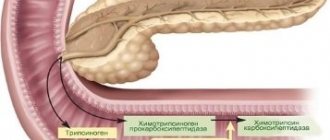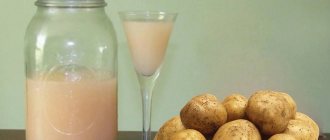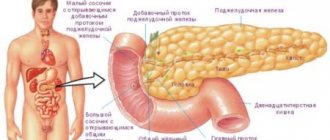Organ diseases and types of drugs
The activity of all organs of the gastrointestinal tract is interconnected - if a person has gastritis, sooner or later the intestines and esophagus will begin to suffer. When the gallbladder is damaged, signs of liver disease appear, and the pancreas even reacts to any existing change, because it is considered the most “delicate” organ. Any chronic pathologies of these organs are incurable, but it is quite possible to stop their development and prevent exacerbations.
In the treatment of gastrointestinal diseases, various drugs are used, included in several groups.
Despite the fact that after the diagnosis, the doctor will indicate a list, prices and analogues of liver tablets, and will recommend medications for the prevention of interdependent diseases, we must not forget about the therapeutic diet. Only through proper nutrition can the symptoms of the pathology be reduced, and medications will contribute to final recovery. Here are the most common medications for the liver and pancreas:
| Group | Example of a drug | Price, rubles |
| Antispasmodics and painkillers | Drotaverine | 15 |
| Enzymes | Pancreatin | 20 |
| Antacids | Phosphalugel | 230 |
| Hepatoprotectors | Essentiale | 750 |
| Antisecretory | Ranitidine | 35 |
| Herbal medicines | Milk thistle | 50 |
Treatment is carried out only under the supervision of a doctor; independent therapy is unacceptable - in some cases it can cause great harm (for example, cause the movement of a stone in the gall bladder).
Dietary food during therapy
A measure of prevention and therapy for diseases of the gastrointestinal tract is special diet number 5. It is prescribed to patients with pancreatitis or impaired liver function. It is also suitable for patients with diabetes. This disease often develops against the background of liver damage.
Authorized products:
- thermally processed low-fat dairy products (dishes like casseroles or cheesecakes);
- egg white omelettes (the yolk is difficult to process and therefore undesirable);
- porridge with water (rice, oatmeal)4
- vegetable puree soups and purees based on potatoes, cauliflower, zucchini;
- fruit drinks and jelly without sugar, decoctions of medicinal herbs, weak black or green tea without additives;
- crackers, biscuits or dry bread.
This diet is used when the patient’s condition has already returned to normal. It is usually prescribed 3-4 days after an exacerbation of pancreatitis, hepatosis or other disorder of the processing organs. Before the diet, you can only drink various liquids: decoctions, fruit drinks, water, tea. In a state of exacerbation, the body is not able to digest food; there is constant vomiting, which intensifies after eating solid foods. First, the patient should drink these drinks every 15-20 minutes, trying to control vomiting. When the condition is somewhat normalized, with the permission of the doctor, you can switch to diet number 5.
Important. Dietary nutrition reduces the load on the pancreas and liver, allowing the organs to recover. It increases the effectiveness of using folk remedies and special medications.
A few dozen days after starting diet number 5, you can switch to a less strict diet: baked and fresh non-sour fruits and dietary marshmallows are added to the diet. After some time, you can add honey and unsweetened jam. During the diet, you need to strictly monitor your blood sugar readings, since diabetes mellitus can develop against the background of liver and gland disorders. With prolonged fasting, which is necessary before starting a diet, the risk of developing diabetes increases. Therefore, the initial stage of the diet, when only liquids are allowed, should be carried out under the supervision of a doctor.
We also recommend viewing: What is pancreatic lipomatosis and how to deal with it?
Dietary nutrition is not a folk remedy, although it is an auxiliary method of treatment. The diet should be compiled individually, according to the recommendations of the treating hepatologist. Elements of traditional medicine are present in the diet, but they need to be agreed with a doctor. You can use decoctions based on rose hips, raisins, celandine (with caution), chamomile and mint.
Essential phospholipids
If the right side hurts, there is heaviness after eating, bitterness often appears in the mouth, we are most likely talking about diseases of the hepatobiliary system. Most often, the pathology starts with disorders in the gallbladder, later the liver begins to suffer, and then pancreatic dysfunction occurs.
When the system is affected, tablets with essential phospholipids are most often prescribed. Effective and popular tablets among patients are Essentiale Forte. The drug is a powerful hepatoprotector, since its constituent component is the main element in the structure of the liver. What effects does the medicine have when taken regularly? This:
- integration of phospholipids into damaged areas of the organ;
- restoration of the integrity of liver cell membranes;
- acceleration of general regeneration and prevention of further organ destruction;
- improvement of fat and protein metabolism;
- acceleration of fat and cholesterol utilization;
- strengthening the detoxification function of the liver;
- preventing liver degeneration;
- stabilization of bile composition.
The indications for taking the medicine are extensive - it should be taken in case of alcoholism, fatty liver disease, toxic liver damage, cirrhosis, hepatitis, cholelithiasis; contraindications include only those under 12 years of age. Even pregnant women often recommend this medicine to support the liver. It can be replaced by a number of analogues - the list of drugs includes Esslial Forte, Rezalut, Phosphogliv, Eslidin.
Other hepatoprotectors
In case of serious liver damage (fatty degeneration, cirrhosis, drug-induced hepatitis, condition after chemotherapy, etc.), the doctor prescribes complex treatment. It includes strong hepatoprotectors of synthetic origin. In this case, there is no point in looking for effective and inexpensive liver pills - all powerful remedies have a fairly high price.
The most famous hepatoprotective agent is Heptral.
It is better to take the medicine only as prescribed by a specialist. Its actions are extensive - regenerating, antioxidant, detoxifying, cholekinetic. The drug is a derivative of the amino acid ademetionine, therefore, when it enters the body, it stimulates its production in the liver. A course of treatment restores the liver at the cellular level, significantly improves the functioning of the gallbladder and pancreas. Indications for treatment:
- cholestasis;
- hepatitis;
- cirrhosis;
- hepatopathy after taking toxic drugs;
- drug addiction, alcoholism;
- cholecystitis;
- cholangitis;
- liver failure.
The effect of taking Heptral lasts for 3 months after a monthly course. The price of the medicine is 2100 rubles for 20 tablets; its exact structural analogue Heptor costs 1100 rubles, but has a lower dosage. For liver diseases that are accompanied by the release of ammonia, the drug Hepa-Merz (1800 rubles) is usually prescribed as a hepatoprotector.
Herbal remedies
There is an opinion among patients that in order to relieve pain and heaviness, the liver needs to be cleansed of toxins, and the unpleasant sensations will stop. In fact, herbal medicines are not indicated for everyone - they accelerate the excretion of bile, dilute it and can cause the movement of large gallstones. This will lead a person to the operating table, so cleanings are prohibited without diagnosis and medical prescription!
If indicated, herbal remedies will become a faithful assistant to a person with problems of the hepatobiliary system. The most commonly prescribed medicines are based on milk thistle and artichoke; they have the following effects:
- relieve spasms from the walls of the gallbladder and ducts;
- normalize the amount of bile;
- dilute bile and facilitate its entry into the intestines;
- protect the liver during intoxication;
- give an antioxidant effect, bind free radicals, toxins in the liver;
- restore the walls of hepatocytes;
- normalize the overall function of the system.
The names of inexpensive medications are: Gepabene (500 rubles), Karsil (420 rubles), Galstena (320 rubles), Hofitol (390 rubles). Milk thistle meal, which must be added to food, costs from 50 to 200 rubles. Also, the composition of remedies for the liver and pancreas may include fumaria and dandelion.
Types of medications: list
With the development of pathological processes associated with alcohol poisoning, viral infections, chronic problems, the following medications are used for the liver:
Medicines for diseases of the pancreas and liver are aimed at removing toxins, blocking pain and normalizing functions.
- drugs aimed at protecting the liver - hepatoprotectors: “Essentiale”, “Liv 52”, “Karsil”, “Gepabene”, “Heptral”, “Phosphogliv”;
- drugs that suppress pathological microorganisms: penicillins, macrolides, cephalosporins;
- tablets, the main component is milk thistle: “Legalon”, “Karsil”, “Silimar”;
- medicines including artichoke (“Hofitol”);
- means to combat spastic pain: “Drotaverine”, “No-Shpa”;
- drugs to enhance the formation and excretion of bile (“Ursosan”).
The list of medications for the pancreas includes:
- tablets that improve digestion thanks to the enzymes they contain: “Creon”, “Panzinorm”;
- antacids: Maalox, Gaviscon, Rennie, Phosphalugel.
- proton pump inhibitors (Omez);
- proteolysis inhibitors (“Octeroid”);
- solutions for detoxification for acute infections and toxic poisoning: “Hemodez”, “Neogemodez”, “Gluconeodez”;
- means to combat spastic pain: “Drotaverine”, “No-Shpa”;
- antibiotic drugs with a wide spectrum of action: “Oletetrin”, “Biseptol”, “Tetracycline”, “Sigmamycin”, “Bactrim”.
Antibiotic drugs for the treatment of the liver and pancreas
For the liver
Antibiotic agents are aimed at eliminating pathogens that provoke an inflammatory process in the liver or gall bladder.
For inflammation of the liver and pancreas, antibiotics are used. Their main task is to destroy pathogenic microorganisms and stop the deterioration of organs. In the case of liver disease, antibiotics are used to treat complications of cirrhosis. Since cirrhosis itself is not bacterial in nature, antibiotics are not used in treatment, but when inflammation develops, this is the main part of therapy.
| Complications of cirrhosis | ||
| View | Characteristic | Necessary drugs |
| Ascites-peretonitis | Excessive flow of fluid into the peritoneal cavity. The fluid becomes infected, which provokes peritonitis. | Broad spectrum antibiotics:
|
| Pleurisy | Pathological fluid accumulates in the spaces between the pleural layers. Most often occurs in the presence of ascites. | III generation cephalosporins (Cefotaxime, Ceftriaxone) intravenously |
| Hepatic encephalopathy | Under the influence of ammonia on the brain, a neuropsychiatric syndrome develops. | Non-absorbable, gentle antibiotics: Rifampicin, Neomycin, Vancomycin, Metronidazole |
For the pancreas
If the patient develops pancreatitis, antibiotic therapy will be required. At the initial stage, broad-spectrum antibiotics help: Oletetrin, Biseptol, Tetracycline, Sigmamycin, Bactrim. If the case is advanced and cholangitis or peripancreatitis has developed, then the best medications are: Cefuroxin intravenously (can be administered intramuscularly), Cephobid or Ampioxin. In case of exacerbation of pancreatitis, intramuscular administration of the following drugs is practiced: Rifampicin, Kanamycin, Ampicillin. The dosage of the drugs is determined by the doctor, based on the results of tests, studies of the patient and medical history.
Hepatoprotectors
Hepatoproctors are necessary during the treatment period:
- hepatitis caused by poisoning and viral nature;
- damage caused by alcohol;
- primary biliary cirrhosis.
The best product from this group is considered “Liv 52”. It is a product with a complex effect, which is based on components of plant origin: powdered yarrow, capers, Chinese cinnamon, chicory, nightshade. The active ingredients of herbs act on the liver as follows:
- restores the membrane structure of liver cells;
- helps liver cells resist the toxic effects of pathogens;
- increases the content of enzymes of the P450 group;
- enhances the synthesis of protein and phospholipid components;
- blocks the degeneration of adipose tissue and the development of fibrosis;
- improves intracellular metabolic processes.
Tablets based on milk thistle and artichoke
To help the liver function, medications containing milk thistle can be prescribed. The most popular is Karsil. The main component of the tablets is dry milk thistle fruit extract. Thanks to the active substance, the regeneration process in the liver tissues is activated, microcirculation is improved and, due to this, metabolic disorders disappear.
Products whose main component is field artichoke are considered equally effective. The most commonly prescribed drug is called “Hofitol”. The drug is presented as a solution that must be taken orally. Under the influence of the active substance, the outflow of bile from the gallbladder improves, and the amount of urine produced per day increases. The blood is gradually cleared of ammonia and urea, and the patient feels better. Used to treat cirrhosis and chronic hepatitis.
Choleretic agents
| Choleretic drugs | |
| Name | Action |
| "Essentiale" | Normalizes cell membranes |
| "Ursosan" | Reduced cholesterol synthesis by the liver |
| "Hofitol" | Eliminates belching, feeling of heaviness in the stomach, increased gas formation, dyspepsia |
| "Allohol" | Improves intestinal and stomach function |
| "Holosas" | Has diuretic and anti-inflammatory effects |
| "Nikodin" | Restores liver parenchyma |
| "Liobil" | Strengthens intestinal motility, accelerates the processes of absorption and breakdown of fats |
Antiviral drugs
In the treatment of the liver, combinations of the antiviral drugs Ribavirin and Interferon are often used. This combination fights the virus most effectively. Interferon increases a person’s immune defense against the virus and also suppresses the growth of pathological cells in the liver. In addition, the drugs prevent viral RNA replication from occurring. Combination therapy is used for hepatitis B and C viral types.
Treatment of unpleasant symptoms
For diseases of the liver and pancreas, treatment always includes taking painkillers, since the manifestations of the main diseases of the organs - hepatitis and pancreatitis - are very painful. Analgesics (Analgin, Aspirin), antispasmodics (No-Shpa, Spazmalgon, Drotaverin), as well as non-steroidal anti-inflammatory drugs (Movalis, Indomethacin, Voltaren) are used.
When problems with the pancreas and liver worsen, nausea and vomiting occur - common symptoms that occur in all patients. The drugs Cerucal, Motilak or Metoclopramide are prescribed. In addition to vomiting, patients experience stomach upset. To stop diarrhea, Imodium and enterosorbents are used. Espumisan helps relieve bloating. To reduce excessively high body temperature, you will need antipyretics (Paracetomol).
Enzyme preparations
Medicines containing pancreatic enzymes are required for any person with chronic pancreatic disease. Most often, this pathology becomes chronic pancreatitis, much less often - cystic degeneration. Even with diabetes, organ function decreases, so a person requires enzyme replacement therapy.
For the treatment of chronic pancreatitis, a suitable drug based on pancreatin is selected.
The cost of medications, depending on the dosage, brand, and number of tablets, can range from 30 to 1,500 rubles. They are taken with meals; the dosage rate is directly determined by the severity of organ damage and the residual function of the gland. Enzymes, entering the body, facilitate the digestion of food and ensure complete absorption. Medicines are also indicated in the complex treatment of diseases of the liver, gall bladder, and intestinal infections. The most common drugs are Creon, Mezim, Panzinorm.
Diabetes is not a death sentence
To effectively treat this disease, it is necessary to take a set of measures:
- use of medications;
- strict adherence to the diet;
- change of lifestyle.
Drug treatment will be based on the use of insulin for type 1 diabetes and glucose-lowering drugs for type 2. Again, the dosage of such substances is purely individual and depends on each individual, so self-medication is contraindicated.
The main task of the patient is to change his lifestyle and follow the diet and all the doctor’s instructions.
The diet includes:
- the amount of energy that enters the body should be approximately equal to that which it uses. In simple terms – don’t overeat;
- eating 5-6 times a day in small portions;
- a balanced diet of proteins, fats and especially carbohydrates;
- limiting everything fried, smoked, sweet. You need to give up quickly digestible carbohydrates (chocolate, carbonated drinks, etc.);
- careful control of blood glucose levels.
Treating such a disease is very difficult, but with the right approach and following all the rules, you can achieve excellent results.
gormonoff.com
Medicines for acute and chronic pancreatitis
Acute damage to the pancreas is quite difficult to treat - here a strict diet, even complete fasting, comes to the fore, because the goal is to stop the production of enzymes and stop the self-digestion of organ tissue. Acute pancreatitis is usually treated in a hospital. The main drugs during this difficult period are antispasmodics:
- Drotaverine;
- No-shpa;
- Papaverine.
The patient is also prescribed strong antisecretory medications - they will reduce the production of acid in the stomach, thereby reducing the load on the pancreas. Usually, histamine H2 receptor blockers are prescribed - Ranitidine, Famotidine or proton pump inhibitors - Omez, Nexium, Nolpaza. It is strictly forbidden to drink enzymes during an exacerbation of the disease - they will only worsen the situation.
On the contrary, enzymes will be a critical component of therapy for chronic pancreatitis. Treatment is supplemented by a course of antisecretory medications for 1-2 months. Drugs for restoring intestinal microflora that suffer from pancreatic dysfunction are definitely recommended - Linex, Lactofiltrum, Bifidumbacterin. Treatment includes taking vitamin and mineral complexes.
Diseases affecting organs
| Liver diseases | |
| Categories | Types of diseases |
| Pathological processes that disrupt the normal structure of liver tissue | Hepatitis of toxic and viral type Neoplasms of benign and malignant nature |
| Biliary tract lesions | Blockage of pathways |
| Vascular liver lesions | Budd-Chiari syndrome |
The most common cause of pancreatic dysfunction is pancreatitis. A person may have either an acute or chronic form of the disease. Manifestations directly depend on the root cause of the development of pancreatic problems. In addition, tumor processes can occur in the organ: cystic lesions, small benign formations, gland cancer.
How else to treat the liver and pancreas?
In case of gastrointestinal pathologies, there is often a need to take prokinetics and antiviral drugs, because the symptoms of the disease are nausea and periodic vomiting. Help control spasms:
- Motilium;
- Motilak;
- Trimedat;
- Ganaton;
- Cerucal;
- Metoclopramide.
With pancreatitis, chronic diarrhea is often observed - in this situation the patient is prescribed Stopdiar, Loperamide, Polysorb. If there is severe pain in the stomach and a sharp release of bile, antacids - Rennie, Maalox, Gaviscon - will help cope with the problem. Since all disorders of the liver necessarily affect the activity of the intestines, it swells, and the stomach literally bursts from flatulence. Such problems should be treated with the help of myotropic antispasmodics - Duspatalin, Mebeverine.
Source
Both the liver and the pancreas are organs that a person cannot do without. Both glands perform a secretory function and help the digestion process. The liver must cleanse the blood, neutralize and remove toxins from the body. As for the pancreas, its task is to regulate the processes of digestion and metabolism.
The organs are interconnected, and if one gland becomes ill, then the functioning of the second begins to malfunction. In this case, it is necessary to select drugs for the treatment of the pancreas and liver, taking into account the medical history, diagnosis, test results and concomitant pathologies.
The patient needs therapy both in the acute phase of the disease and in cases where the disease has become chronic.
Pancreatic pathologies: causes and symptoms
The pancreas produces hormones and digestive enzymes. The following can lead to disruption of the functionality of this organ:
- poor nutrition;
- taking medications;
- drinking large amounts of alcohol, etc.
When the pancreas is damaged, a person may feel severe pain in the hypochondrium. Moreover, it can be localized in different areas - on the right or left side, in the center. It depends on which part of the organ was affected. Heartburn is also likely.
Classification of drugs
Drug treatment will not be successful if a person suffering from a combination of “pancreatitis + hepatitis” does not follow a diet. Insidious inflammation can strike the liver and pancreas at the same time, and many drugs have been developed for such cases.
The names of such drugs number in the dozens, and their classification depends on the therapeutic effect.
You can familiarize yourself with the list of medications for the pancreas and liver, learn about their action and therapeutic purposes:
- “Baralgin”, “No-shpa”, “Papaverine”, “Spazgan”. Help a person get rid of painful sensations. These remedies eliminate acute pain and spasms.
- “Creon”, “Pancreatin”, “Festal”, “Enzyme Forte”. Such medications are intended to compensate for enzyme deficiency. With their help, it is possible to overcome inflammation and improve the functioning of the digestive system.
- "Almagel", "Maalox", "Phosphalugel". The task of these drugs is to neutralize the aggressive acid secretion. They are used to save the tissue structure of the digestive organs from further destruction.
- "Ampicillin", "Doxycycline", "Tobramycin", "Cephobid", "Cefspan". They fight pathogenic bacterial microflora, relieving swelling and inflammation.
Please remember that only a gastroenterologist can choose medicine for the pancreas and liver. Of course, first the doctor must familiarize himself with the research results. The specialist focuses on the general condition of the patient and pays attention to each alarming symptom.
The doctor’s goal is to select a medication that will not only have the desired therapeutic effect on both organs, but will also avoid side effects. Competent therapy will give the patient the opportunity to avoid dangerous complications.
Complications include diabetes, cancer of one of the glands, their degeneration or fatty infiltration.
An indispensable set of drugs for pancreatitis
Pancreatitis is a disease that causes a lot of inconvenience. Depending on the form (acute or chronic), the doctor selects the optimal treatment regimen.
Chronic form
In chronic pathology of the pancreas, atrophy of the glands is always observed. This leads to a sharp decrease in the functional qualities of the organ. To eliminate severe dyspepsia, the patient is prescribed enzymes. Typically, these are tablets or capsules, the intake of which allows the body to absorb food more easily. The most popular means:
- Mezim;
- Creon;
- Panzinorm.
We also recommend viewing: Fatty infiltration of the pancreas
Since enzymes can be partially destroyed under the aggressive influence of gastric juice, drugs to improve digestion are combined with antacids. They reduce the “aggression” of gastric juice, thereby eliminating the obsessive feeling of heartburn. The most commonly used medications are:
- Gastal;
- Phosphalugel;
- Maalox;
- Almagel.
Acute form
With exacerbation of pancreatitis, patients suffer from severe girdle pain. The main goal of doctors: to relieve pain. For this purpose, novocaine blockades are used. The use of antispasmodics and proteolysis inhibitors is also relevant.
At the acute stage, Octreotide has a good effect on the body. This is a specific analogue of somatostatin. It is often prescribed before surgery.
Any drugs intended to treat the liver and pancreas must be prescribed consciously and competently. The human body is a complex structure. There are no standard clear treatment programs. There are basic principles and recommendations, based on which the doctor develops a competent therapeutic scheme for the correct impact on the patient.
Means to improve liver function
Pharmaceuticals have created many products to improve liver function and treat the pancreas. If a person is unlucky and both organs get sick at the same time, then he is supposed to go to the hospital and undergo joint therapy.
To cope with pancreatitis and cure the pancreas, the following medications are used:
- Antibiotics, for example, Bactrim, Biseptol or Sigmamycin. The use of drugs with antibacterial action helps to get rid of pathogenic microflora. When the liver hurts, pancreas therapy (as the pancreas is scientifically called) cannot do without probiotics (for 7 days). Antibiotics have their drawbacks: they are contraindicated for painful liver manifestations, and they should not be used by expectant mothers.
- Antispasmodics that help relieve acute spastic pain, for example, drotaverine and No-shpa.
- Hepatoprotectors, for example, "Gepabene", "Heptral" and "Karsil". The digestive organs need protection from destruction, so patients are prescribed hepatoprotectors.
It is irrational to limit yourself to only the mentioned means, because in this case the treatment will not be complete. It is important not only to defeat pain and harmful bacteria, but to restore digestion with special tablets. Doctors often recommend Creon and Panzinorm.
Hepatoprotectors
Hepatoprotectors are called “liver saviors” - medications that have a positive effect on the functionality of the gland. When hepatoprotectors are consumed, digestive enzymes begin to be produced normally, the affected parenchyma is restored, and the cells are protected from decay.
Hepatoprotectors are divided into two types - synthetic and plant origin.
It cannot be said that hepatoprotectors are a panacea. Yes, they contribute to positive dynamics, but they need helpers in the form of drugs from other groups.
It is necessary to say more about the types of hepatoprotectors:
- Amino acids. It often happens that liver cells are exposed to toxic substances; amino acids protect the gland tissue. Examples of hepatoprotective amino acids are “Methionine”, “Ornithine”.
- Phospholipids. Thanks to these complex lipids, it is possible to improve the biochemical parameters of the liver and cope with degenerative phenomena. In addition, phospholipids stabilize hepatocyte membranes and protect healthy tissues from death.
- Synthetic hepatoprotectors. They combine the properties of natural hepatoprotectors, which makes it possible to protect and restore the gland. Examples are ursodeoxycholic acid, Acetylcysteine.
Taking hepatoprotectors requires quite a lot of time until the negative factors are eliminated.
Do not forget that hepatoprotectors only complement treatment and cannot replace primary therapy.
Antiviral agents
Viruses often lead to disturbances in the functioning of the liver and pancreas; therefore, treatment is aimed at combating infectious agents.
- Many of those who have to treat the liver have heard about interferon and ribavirin. These medications prevent the virus from multiplying and increase immunity. Joint therapy is indicated for hepatitis B and C caused by a virus.
- There are other antiviral agents - Arbidol, Viferon, Intron A and Oscillococcinum.
It takes approximately 5-10 days to eliminate the inflammatory process. Remember that dealing with signs of illness on your own is a bad idea.
Each case is individual, and only the doctor has the right to prescribe the dosage for both adult and small patients.
Traditional methods of prevention
You can also take care of your liver using folk remedies. Traditional medicine is replete with recipes for cleansing the liver. It is often inhabited by parasites: Giardia, roundworms, echinococci. Infusions made from natural plant ingredients help get rid of them. The effect is achieved after several weeks with daily use.
- Turmeric is a natural antibiotic rich in vitamins and minerals. Curcumin, which is part of it, increases cell regeneration. When you mix a teaspoon of honey with a quarter teaspoon of turmeric in a glass of warm water, you get a healing drink. You need to drink it 4 times a day for two weeks.
- Pumpkin normalizes digestion, stabilizes cholesterol, helps cleanse the liver, and relieves inflammation. You can take a glass of fresh pumpkin juice on an empty stomach or 3 tablespoons of pumpkin infusion with honey several times a day. Regular consumption of pumpkin seeds helps fight parasites.
- Olive oil has a good effect on the regeneration of liver cells. Taking a tablespoon daily in the morning will have a positive effect on the condition of the liver.
- Milk thistle, which contains silymarin, a powerful antioxidant, has a hepatoprotective effect. Sold in pharmacies in the form of flour, seeds, meal and oil. Recipe: Grind 30 g of seeds into powder, add 0.5 liters of hot water and boil until the volume is halved, then strain. Take 1 tablespoon of infusion every hour for two months.
- Corn silk increases the production of bile and improves its discharge, and reduces cholesterol levels. An infusion of stigmas is easy to prepare: chop 2 tablespoons, pour 1 glass of boiling water and leave for half an hour. Take the strained infusion three times a day before meals, a third of a glass.
Among medications and folk recipes, it is not difficult to choose a suitable complex for the prevention and treatment of the liver and pancreas. Timely measures taken reduce the risk of disease. Maintaining proper nutrition and a healthy lifestyle increases the chances of organs functioning smoothly over time.
10109 Galina Sorochan 03/21/2018
Medicines based on artichoke and milk thistle
Tablets based on artichoke and milk thistle are another remedy that will be useful for liver disease and inflammation of the pancreas.
The most famous preparation with milk thistle is “Karsil”, which acts due to a dry extract from the fruits of the plant. Milk thistle is also found in other medicines - “Gepabene”, “Legalon 140”, “Silimar”.
Among the preparations that contain field artichoke, “Hofitol” stands out. Artichoke is known for its choleretic effect, and a medicine based on it enhances the outflow of bile from the bladder. In addition, "Hofitol" increases diuresis.
Simultaneous treatment of the liver and pancreas
It has already been said that the liver and pancreas are interconnected, because both organs are “employees” of the digestive system. Liver function is disrupted, causing problems with the pancreas and vice versa.
Simultaneous treatment of hepatitis and pancreatitis is carried out exclusively under the supervision of a doctor, but patients should also be aware of some features:
- A person will need tablets for the liver and pancreas, which protect organ cells. We recommend Heptral and Essentiale - protectors of the glands from various damage and irritation (for example, from unhealthy fatty foods or strong drinks). By the way, the use of such drugs serves as a prevention of stagnant processes in the human body.
- It is impossible not to mention herbal remedies (“Gepabene”, “Silimar”). Natural substances are able to stop the destruction processes, and the liver, together with the pancreas, begins to recover, work and secrete enzymes as usual.
- Infusion therapy is also important, in which special nutrient solutions are administered to the patient through a vein. After inflammation, the body is susceptible to intoxication, and solutions neutralize it, while simultaneously leveling the acid-base balance.
- The use of vitamins has a positive effect on the immune system.
The patient's discipline is of great importance: the person should strictly adhere to a carefully adjusted diet. Probably, the treating specialist will advise you to remember traditional medicine: this way you can not only relieve certain symptoms, but also enhance the effect of medications.
Treatment continues outside the doors of the medical institution: after eliminating the signs of the acute phase, patients should continue therapy in their usual home conditions. Discipline and caution will help avoid relapse, but the doctor always has the final say. It is the doctor who decides what medications and procedures his patient needs.
The author of the article is an infectious disease specialist, hepatologist
© 2020. All rights reserved.
Source
Medicines for the liver are called hepatoprotectors and are intended to restore the structure and functions of the organ. The drugs have different effects and contraindications, so their choice should be approached carefully.
Hepatoprotectors - drugs for liver restoration
How to help the body and treat these diseases?
Firstly, you need to understand that the treatment of such important organs must be agreed with a doctor. It is highly undesirable to undergo treatment at home. For effective therapy, an integrated approach must be used, which includes a special diet and drug intervention.
For proper liver function it is advisable to:
- eat 4-5 times a day, in small portions;
- dishes must be warm;
- cooking method – boiling, parca, baking. Avoid fried and smoked foods - the organ does not like this;
- limit the amount of salt intake to 5 g per day;
- exclude foods that cause bloating (cabbage, grapes, pears).
Among the medications, it is worth noting hepatoprotectors. Their main tasks:
- organ protection;
- resumption of bile flow;
- antioxidant effect;
- lowering cholesterol levels;
- strengthening immunity.
Most often from this group doctors attribute: Karsil, Essentiale Forte, Phosphogliv, Ursofalk. But the choice of a specific representative should be made only by a qualified doctor who will treat a specific patient.
The best treatment method is to prevent the disease from occurring. In order to avoid any problems, you need to remember what each of the above-mentioned organs loves - limiting the intake of smoked products, fatty foods, spices, foods with a very high protein content, and large doses of alcohol. All this can protect the liver and pancreas from the occurrence of illnesses.
When pancreatitis occurs, you first need to ensure that the organ is functionally inactive - it likes to rest after excessive stress. To do this, you need to fulfill 3 main conditions: cold on the abdominal area, hunger and peace. This approach to treatment (at least the first 24 hours) prevents excessive release of active enzymes, which relieves the main symptoms.
Drug treatment includes pathogenetic therapy aimed at relieving pain and normalizing enzyme function. For this, antispasmodics are most often used (no-spa or papaverine, 1 tablet orally to relieve spasms) and drugs Creon, Mezim or other analogues to normalize excretory function (the dosage depends on the individual needs of each patient).
The effect of hepatoprotectors on the liver
The liver acts as a filter in the body, cleanses the blood of harmful and toxic substances; the functioning of the organ significantly deteriorates with prolonged use of alcohol, smoking, and abuse of junk food. Hepatoprotectors are intended for the treatment and prevention of liver pathologies, restore cells, prevent the development of cirrhosis, and slow down the aging process.
Indications for the use of liver medications:
- alcoholic hepatitis - the disease often degenerates into cirrhosis;
- fatty liver hepatosis - the disease develops in overweight people who lead a sedentary lifestyle, diabetics;
- eliminating the consequences of long-term use of antibiotics and other drugs that have a detrimental effect on liver cells;
- viral hepatitis in chronic form.
The liver has high regenerative functions; with proper treatment, damaged cells can be completely restored.
Liver therapy
The best herbs for restoring the liver are celandine, St. John's wort and immortelle.
Use the celandine plant as carefully as possible. It can be poisonous if used in too large dosages. The use of this plant should be gradual, with a gradual increase in doses. Celandine kills germs and bacteria, preventing the spread of the inflammatory process.
We also recommend viewing: Aberrant complication in the pancreas: treatment methods
Immortelle has a pronounced choleretic property. It alleviates the condition of patients with congestion. If pain occurs during its use, this may indicate stones, so you should consult a doctor.
St. John's wort has all the properties listed above, but it also accelerates the regeneration of liver cells. These herbs can be used as part of the collection, but it is better to take turns, in the order given.
List of inexpensive and effective medications for the liver
The concept of hepatoprotectors includes various groups of drugs that differ in composition and therapeutic effect.
Essential phospholipids
The main ingredient of drugs from this group is phosphatidylcholine, the substance restores damaged cells, improves liver function, prevents the formation of connective tissue, and normalizes metabolic processes in the body.
Essentiale - contains phospholipid from soybeans; the medicine is produced in the form of capsules and solutions for intravenous administration.
List of indications:
- any type of chronic hepatitis;
- steatohepatitis;
- cirrhosis, necrosis;
- radiation sickness;
- fatty liver tissue;
- liver failure;
- hepatic coma;
- preventing exacerbation of cholelithiasis;
- before and after surgical interventions in the liver area.
At the initial stage of eliminating liver diseases, it is recommended to use the drug simultaneously in the form of capsules and injections; as the condition improves, the injections are canceled. The solution is administered 1–4 ampoules daily for 10–30 days. Take 2 capsules every 8 hours immediately after meals; they should be washed down with plenty of water. The duration of therapy is 3–6 months, depending on the severity of the pathology. Price – 700–1100 rub.
Essentiale is an effective remedy for liver restoration
The drug should not be taken during breastfeeding; capsules are allowed to be used in the treatment of children over three years of age, injections - for patients over 12 years of age.
Phosphogliv is an improved modern analogue of Essentiale, therefore it has identical indications and release form. The product has anti-inflammatory, antiviral and immunomodulatory effects. The medicine should not be taken while carrying and feeding a child or with antiphospholipid syndrome.
In the form of a solution, Phosphogliv is administered 10 ml in the morning and evening, capsules should be drunk 1-2 every 6-8 hours during meals. The average course duration is 10–12 weeks. The price of the drug is 950–1400 rubles.
Phospholipids are contraindicated for use in acute forms of hepatitis.
Amino acid derivatives
In the treatment of the liver, drugs based on ademetionine and ornitol aspartate are effectively used - these substances help cleanse and restore the liver and have an antidepressant effect. The main indications are fatty hepatosis and withdrawal syndrome, drug poisoning, viral forms of hepatitis.
Heptor is available in tablets and lyophilisate form. The drug is not prescribed in the first and second trimesters of pregnancy, during breastfeeding, in children, or in cases of impaired metabolism of vitamin B12. Price – 1.1–1.3 thousand rubles.
Heptor should not be used during pregnancy and lactation
The drug is administered intramuscularly or intravenously, 1–2 bottles per day for 14 days. Then you need to switch to tablets - 2-4 pills daily for a month.
Hepa-Merz - produced in the form of granules and concentrate for preparing a solution. The medicine should not be used by people with serious kidney pathologies. Price – 1.7–2.7 thousand rubles.
To prepare a single dose, you need to dissolve the contents of one sachet in 200 ml of water at room temperature; you need to take 4 sachets per day. The solution is administered intravenously, 4 ampoules per day at regular intervals.
Bile acids
Medicines based on ursodeoxycholic acid quickly eliminate pathologies of the liver and gall bladder; they have a choleretic and hypoglycemic effect. Urospalk and Livodex are considered the most effective; they have similar indications and contraindications.
Urospalk is a medicine in the form of capsules and suspensions, reduces the amount of fatty acids, is intended to protect the liver from toxins and poisons, restores cell membranes, eliminates excess cholesterol, and has an immunomodulating effect. Cost – 900–1800 rubles.
Indications for use:
- biliary primary cirrhosis;
- primary cholangitis;
- cholesterol stones;
- overgrowth of the bile ducts;
- prevention of bile stagnation in bedridden patients;
- after liver transplantation.
The medicine Urosfalk should not be taken during the acute phase of diseases of the gallbladder, ducts, intestines, with a decompensated form of cirrhosis, with significant disturbances in the functioning of the pancreas, liver, kidneys.
Urosfalk protects the liver from poisons and toxins
Treatment of the pancreas with folk remedies
Recipe 1. (compress from yogurt). In case of an acute attack of pancreatitis, a compress of yogurt, which is done at night, relieves pain and inflammation well. Soak a soft cloth with curdled milk, place this compress on the stomach area, including the left side, cover the top with polyethylene and wrap it in a woolen scarf or scarf. The course of treatment is from 4 to 6 weeks.
Recipe 2. (garlic+parsley+lemon). 1 kg of lemons, pitted but with peel, 300 g of parsley and 300 g of garlic, minced and stored in a glass container in the refrigerator. Take 1 teaspoon 3 times a day 15 minutes before meals. It is better to drink the medicine with an infusion of blueberry, lingonberry and strawberry leaves, bean pods and corn silk, taken in equal parts. This infusion is prepared as follows: 1 tbsp. Pour 1 cup of boiling water over a spoonful of the mixture and leave in a thermos overnight. A glass of infusion is enough for just three doses of the medicine, that is, 1 teaspoon of garlic mixture should be washed down with a third glass of infusion. The course of treatment is 3 months. Recipe 3. (immortelle infusion). Infusion of immortelle. Grind 3-5 g of flowers and add 500 ml of cold water. Leave for 8 hours (this is the daily dose). Take 1 glass per day for 2-3 weeks.
Recipe 4. (infusion of chamomile and immortelle). Pour 1 tablespoon of chamomile and 1 tablespoon of immortelle with a glass of boiling water and leave for 30 minutes. Strain. Take half a glass chilled 2-3 times a day 30 minutes before meals for 2-3 weeks.
Recipe 5. (rolled oats). Hercules. Cook thin porridge in water without soot. Eat a little without oil during the day for several days.
Recipe 6. (oat infusion). Pour a pack (500 g) of oats with a liter of boiling water, leave for forty minutes, strain and take the infusion half a glass three times a day.
Recipe 7. (oat milk). You need clean, unseasoned oats in the husk - you can buy them at the market. You can use whole oatmeal, but it's much better in the husk. Take 100 g of oats, rinse in a colander and set to boil in 1.5 liters of water in an enamel pan. Once the oats have boiled, place over low heat. You only need to boil for one hour, but after 40 minutes. Using a wooden masher, crush the oats directly in the pan. Then cook for another 20 minutes. After cooling, strain through nylon - you can take an old nylon stocking, washed clean, or a piece of tights. Gauze is no good - it stretches and allows hard pieces to pass through. You will end up with a white liquid that looks like milk. That's what you need. You need to drink 3-4 times a day before meals, 100 g (children 50 g). Store oat milk in the refrigerator. You can drink it for 2 days, on the third day a new one is prepared.
Recipe 8. (buckwheat with kefir). Something bad happened to me - my pancreas became inflamed. I won’t talk about what preceded this, perhaps the cause was disordered eating, perhaps my whole lifestyle led to this, but when I saw a doctor, the diagnosis was made - pancreatitis. In a word, nothing good. I began to undergo treatment, follow a diet, and take care of myself. My grandmother intervened in the healing process, she simply forced me to take this food every day: pour a tablespoon of buckwheat flour (grind the buckwheat in a coffee grinder) into a glass of kefir and leave it overnight, eat it in the morning instead of breakfast. In addition, I took the following collection: peppermint leaves, elecampane root, dill seeds, dried herb, St. John's wort, coriander, take in equal parts, mix. Pour 1 tablespoon of the mixture into a glass of boiling water and leave for an hour. Take half a glass 4-5 times a day.
Recipe 9. (decoction of iris and wormwood). 15 minutes before meals, take a quarter to a third glass of iris and wormwood decoction. It is very useful to drink this mixture with herbal infusion (one-third of a glass), which is prepared as follows: mix corn silk, bean pods, strawberry leaves, lingonberries and blueberries in equal proportions. Pour a tablespoon of the mixture into 1 cup of boiling water, wrap it (or put it in a thermos), leave for 6-8 hours. Then strain.
Recipe 10. (Rhodiola rosea). Rhodiola rosea tincture helps a lot, which should be taken 20-30 drops half an hour before meals.
Recipe 11. (parsley decoction in milk). Take 800 grams of parsley, wash thoroughly, chop finely, pour boiling milk in an enamel pan until it covers the entire herb. Simmer until the milk melts (but does not boil). This is the portion for 1 day of use. The decoction is taken every hour, 1-2 tablespoons.
Recipe 12. (Jerusalem artichoke). Every day, and especially in the spring, eat 1 tuber of Jerusalem artichoke (earthen pear).
Taking aspen decoction supports the pancreas well
In early spring, collect 300 g of bark from a young tree, the diameter of which should not exceed 20 cm, put it in an enamel bowl and fill it with water so that it just covers the bark. Boil for 20 minutes, and then put in a warm place to infuse for 12 hours. Drink 50 ml of decoction at room temperature in the morning and evening before meals. This folk remedy for treating the pancreas will also help heal the stomach and liver.
During treatment of the pancreas, exclude fried, salted, spicy, peppered, smoked, pork and canned foods from food.
To treat the pancreas, grind hemp seed in a coffee grinder. In the evening, take 1 full tsp. powder, pour 2 cups of milk over it and cook until half a cup of broth remains in the pan. Strain it through gauze folded in three layers, let it brew overnight, and drink it on an empty stomach in the morning. After 2 hours, take 2 Noshpa tablets, and after another 2.5 hours you can eat.
Take courses for 5 days, with ten-day breaks between them. At least three such courses must be conducted. At the same time, the gallbladder will be cleansed.
Diabetes mellitus is a serious disease that occurs due to dysfunction of the pancreas. This classic herbal mixture will greatly alleviate the condition of a diabetic. To treat the pancreas with folk remedies, use flowers of cumin, echinacea, calendula, clover, marigolds, walnut leaves, Jerusalem artichoke, blackberries, roots of burdock, dandelion, wheatgrass, corn silk and bean leaves. Helps normalize sugar and elderberry bud tea.
Source
budetezdorovy.ru
